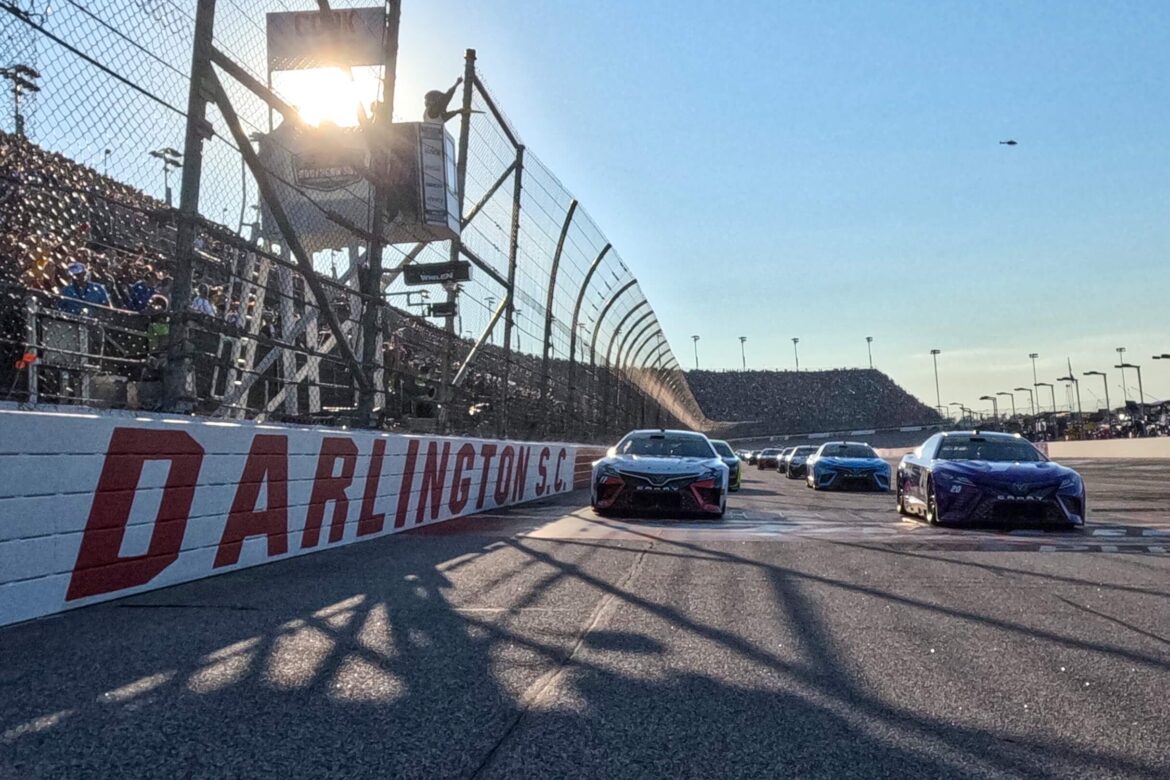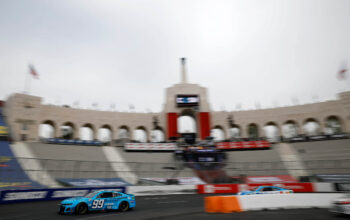KANSAS CITY, Kansas — No one has ever ventured to challenge Darlington Raceway’s claim that it is the track “Too Tough To Tame” over the years.
But is it the hardest oval in NASCAR? We polled twelve drivers, or one-third of the average NASCAR Cup Series field, and, well.
“Darlington is probably going to be your winner,” Joey Logano said with a laugh.
The historic, egg-shaped, 1.366-mile track in South Carolina, which is home to NASCAR’s next Cup Series stop, garnered 7.5 out of 12 votes in our survey. Additionally, no other tune received more than two votes, despite the fact that it may not look like a huge majority.
“It can be driver-particular as far as what is difficult for one person versus another,” Chase Elliott said. “But generally speaking, Darlington is a really tough place, and I don’t think there’s many guys in here who would tell you otherwise.”
Several drivers took long pauses — roughly the equivalent of saying “Darlington” six times — while they considered the question. A couple wanted to know what the term “toughest” oval meant because it may refer to their individual abilities or the level of difficulty in general. And those can differ significantly.
“Just going around the racetrack, Darlington is hard from a challenge standpoint,” Chase Briscoe said. “Like for (Xfinity Series rookie) Shane van Gisbergen, I’m like, ‘Man, that’s going to be a hard one to just show up and be good at.’
“But for me personally, Loudon (New Hampshire) is the hardest to get around. It’s flat, awkward, rough. I’ve always struggled there.”
In a similar vein, Bubba Wallace was inspired to speculate about what might occur if Lewis Hamilton, the seven-time Formula One winner, came to lead a NASCAR season.
“Throw Lewis in a Cup car at an oval — that’s what I think of,” Wallace said. “To find speed at Dover is going to be really hard, but then (it’s also hard to) find the rhythm you need at Darlington to be OK.”
Darlington active wins leader Denny Hamlin, Tyler Reddick, Ryan Blaney and Ross Chastain also named the “Lady in Black” as the toughest oval. But why? What makes it that way?
It all begins with Darlington’s renownedly unique endings. Turns 3 and 4 are tighter with a more abrupt exit because track designer Harold Brasington had to avoid a neighbor’s minnow pond while building was underway. Turns 1 and 2 are more conventionally rounded turns.
Furthermore, a track built for 1950s stock cars was never meant to accommodate the cutting-edge racing vehicles of today. Drivers discovered throughout the years that the quickest way around the circuit was to run as near to the wall as they could without earning a coveted “Darlington stripe”; in today’s NASCAR, getting any closer to the wall would mean losing all chance of winning.
But running the top requires intense focus and precision because, as Reddick noted, “the wall is a bit wavy.”
“If you go into the corner really chasing the wall, you’re going to end up hitting it about a third of the way around,” he said. “The first time you go there, it can really throw you off. You think, ‘Oh, I can just run up by the wall …’ and boom, you hit it.”
Additionally, there is the very abrasive surface that contributes to high tire wear. After the race, according to Blaney, drivers are “mentally weary” since it is difficult for them to settle into a rhythm when they can not run the same way every lap. The vehicles have to continually recalculate as the tires keep coming off and they drop one or two tenths of a second per lap.
“As a driver, how do you continue to be on the limit but also understand how far you have to back up every lap to not go over that limit?” Blaney said. “You’re like, ‘OK, how do I drive differently for the tire grip now compared to what I had last lap?’
“That’s a difficult thing, and then you’re doing it inches from the wall and there’s no room for mistakes.”
But though Darlington’s toughness is indisputable, it wasn’t a unanimous selection. In the “others receiving votes” category, William Byron and Carson Hocevar said Charlotte was a sneakily hard track (“overlooked in being super difficult,” as Hocevar put it).
Said Byron: “It’s super bumpy, and this car is really rigid, so Charlotte is one of the toughest places we go now because it’s a high commitment level and not a ton of falloff. The car is on the edge there.”
Austin Dillon said the “edginess” of Texas, a track that lures drivers into a false sense of security before sending their cars for a spin, is also a tough place to race. And Chris Buescher, despite being a former Bristol winner, said that Tennessee short track is hard because drivers have to go all out for 500 laps there, which will “flat wear you out.”
“Well, with the exception of this past Bristol,” he said with a smile, referring to the excessive tire-wear situation seen in the March race there.
Naturally, it should not come as a surprise to Buescher or any of his fellow NASCAR driving corps members that the majority of them selected Darlington as their ultimate challenge.
But given the time of our poll, Elliott questioned whether there might be another element as well.
“Well, (the Darlington race is this) week,” he said. “So it’s fresh on everybody’s minds.”
(Top photo from last year’s Southern 500 at Darlington Raceway: James Gilbert / Getty Images)

